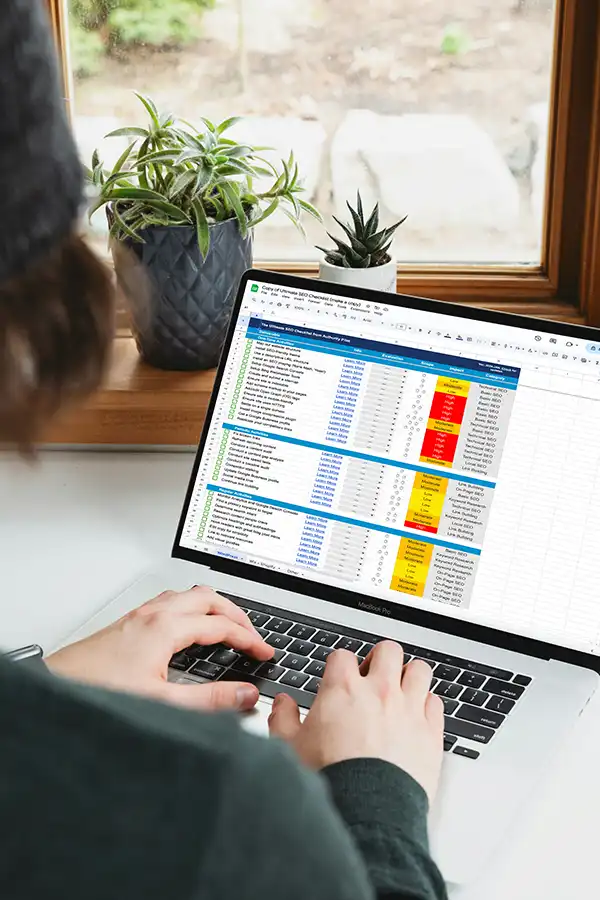
A backlink profile refers to the collection of inbound links that point to a particular website or webpage. These links are crucial for search engine optimization (SEO) as they serve as endorsements or votes of confidence from other websites. In simple terms, a backlink profile is like a digital footprint that search engines use to assess the credibility and relevance of a website.
In SEO, backlinks play a pivotal role in determining a website’s visibility and authority in search engine rankings. A backlink profile encompasses all the links pointing to a website, and it serves as a critical factor for search engines to evaluate the quality and relevance of a site’s content. Understanding the concept of a backlink profile is essential for any website owner or SEO practitioner aiming to enhance their online presence and attract organic traffic.
Components of a Backlink Profile
A robust backlink profile consists of several key components that contribute to its overall strength and effectiveness. These components include backlink quantity, backlink quality, anchor text diversity, and link relevancy.
Backlink Quantity
The number of backlinks a website has is an important factor to consider. Generally, the more quality backlinks a site has, the more reputable it appears to search engines. However, it is essential to note that the focus should be on acquiring natural and high-quality backlinks rather than sheer quantity.
Backlink Quality
The quality of backlinks matters just as much as the quantity. Search engines value backlinks from authoritative and relevant websites more than those from low-quality or spammy sources. High-quality backlinks like those available in Authority Pilot’s Link Outreach service can significantly enhance a website’s credibility, visibility, and organic ranking potential.
Anchor Text Diversity
Anchor text refers to the clickable text within a hyperlink. Having a diverse anchor text profile is crucial for a healthy backlink profile. It involves using a variety of anchor text phrases that are relevant to the target page. This diversity helps search engines understand the context and relevance of the linked content.
Link Relevancy
Link relevancy refers to the connection between the source of the backlink and the content of the target page. Search engines prioritize backlinks from websites that are topically relevant to the target page’s content. Relevancy enhances the credibility and authority of a backlink, making it more valuable in terms of SEO.
Evaluating Backlink Profiles
Evaluating the strength and quality of a backlink profile is an important step in optimizing a website’s SEO performance. Several methods and tools can assist in this process.
Using Backlink Analysis Tools
Various backlink analysis tools, such as Ahrefs, Moz, and SEMrush, provide comprehensive insights into a website’s backlink profile. These tools reveal crucial metrics such as the number of backlinks, referring domains, domain authority, and anchor text distribution. By analyzing these metrics, website owners can gain useful insights and make informed decisions to improve their backlink profile.
Assessing Domain Authority and Page Authority
Domain authority (DA) and page authority (PA) are numerical scores that indicate the strength and credibility of a website or webpage. These scores are calculated based on various factors, including the quality and quantity of backlinks. Websites with higher DA and PA are more likely to rank higher in search engine results pages (SERPs).
Identifying Toxic or Spammy Links
In addition to assessing the positive aspects of a backlink profile, it is crucial to identify and address any toxic or spammy links. Such links can harm a website’s SEO efforts and even result in penalties from search engines. Regularly conducting backlink audits and using tools like Google’s Disavow Links can help identify and disavow harmful links.
Building a Strong Backlink Profile
Building a strong backlink profile requires a strategic approach and a focus on acquiring high-quality and relevant backlinks. Some effective strategies for building a robust backlink profile include:
Natural Link Acquisition Strategies
Creating valuable and shareable content is the foundation of natural link acquisition. By consistently producing high-quality content, website owners can attract organic backlinks from other reputable websites and industry influencers.
Guest Blogging and Content Marketing
Guest blogging involves contributing content to other websites within the same industry or niche. By guest blogging, website owners can not only earn backlinks but also establish themselves as experts in their field. Content marketing, including infographics, videos, and interactive content, can also attract backlinks when shared and promoted effectively.
Engaging with Influencers and Industry Experts
Building relationships with influencers and industry experts can open doors to valuable backlink opportunities. Collaborating on projects, conducting interviews, or being featured in expert roundups can result in backlinks from authoritative sources within the industry.
Participating in Online Communities
Active participation in relevant online communities, such as forums, social media groups, and industry-specific platforms, can lead to networking opportunities and natural backlinks. By engaging in discussions, answering questions, and providing valuable insights, website owners can establish themselves as authorities in their field and attract backlinks.
Maintaining a Healthy Backlink Profile
Building a strong backlink profile is an ongoing process that requires regular monitoring, maintenance, and adaptation. To maintain a healthy backlink profile:
Regular Monitoring and Analysis
Regularly monitoring and analyzing the backlink profile helps identify any changes, such as the acquisition of new backlinks or the appearance of toxic links. This monitoring ensures that the backlink profile remains in good standing and allows for timely action if any issues arise.
Disavowing Low-Quality or Irrelevant Links
Disavowing low-quality or irrelevant links is an important practice in maintaining a healthy backlink profile. When identifying harmful links, website owners can use Google’s Disavow Links tool to request that search engines ignore those links when evaluating the website’s credibility and relevance.
Keeping Up with Algorithm Changes
Search engine algorithms evolve continuously, and their understanding of backlinks and their impact on rankings may change. Staying informed about algorithm updates and adapting link building strategies accordingly is crucial for maintaining an effective backlink profile.
Continued Link Building Efforts
Link building should be an ongoing effort to enhance a website’s backlink profile. By consistently seeking out opportunities for new backlinks, website owners can continue to improve their website’s authority, visibility, and organic search rankings.
Conclusion
A well-structured and diverse backlink profile is vital for effective SEO. It provides search engines with important signals about a website’s credibility, authority, and relevance. By understanding the components of a backlink profile, evaluating its strength, and employing effective link building strategies, website owners can significantly improve their online visibility, attract organic traffic, and achieve better search engine rankings.















